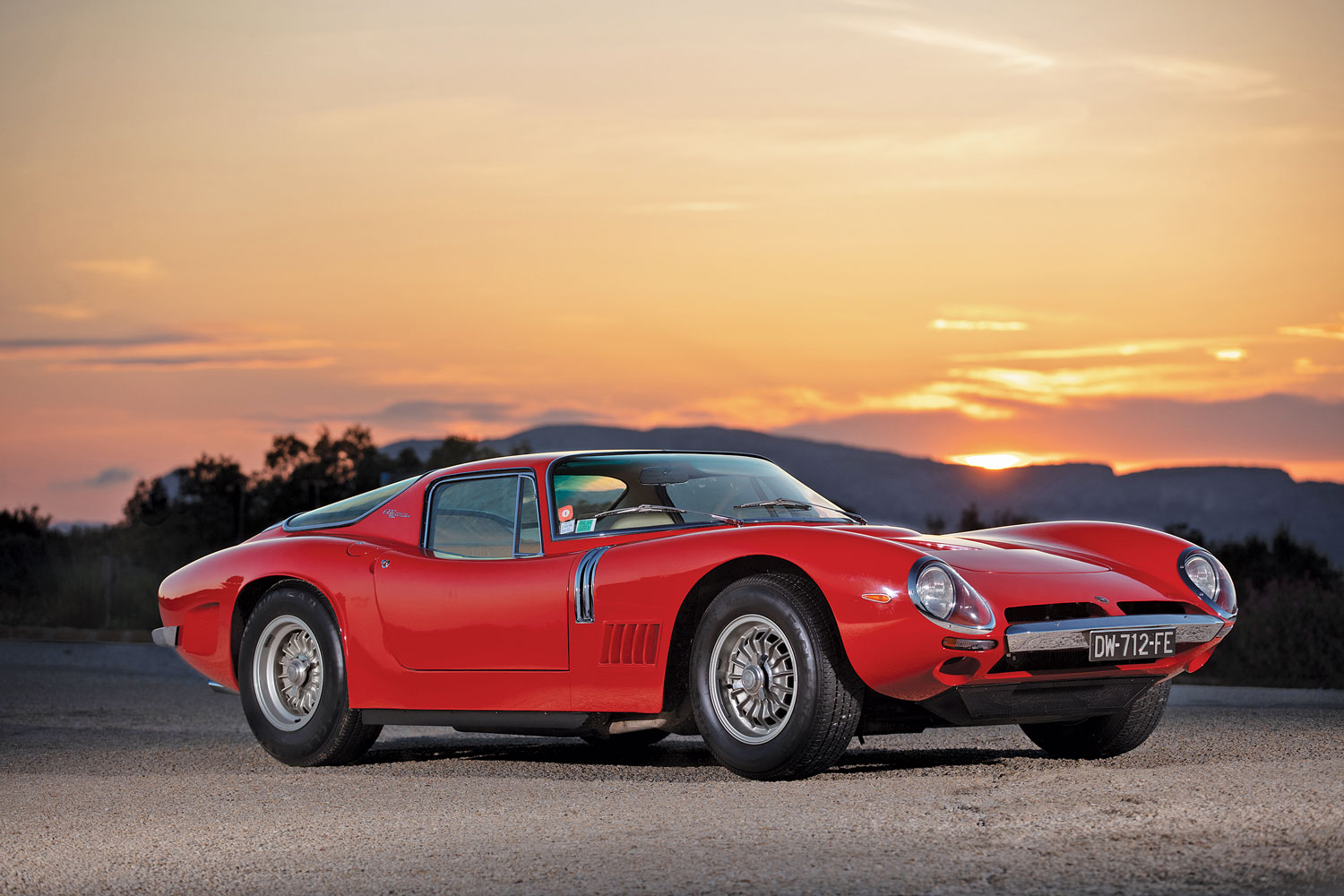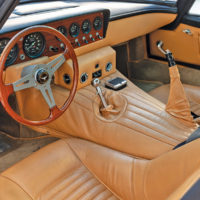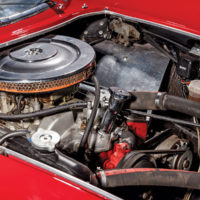SCM Analysis
Detailing
| Vehicle: | 1968 Bizzarrini 5300 GT Strada |
| Years Produced: | 1965–68 |
| Number Produced: | About 120 |
| SCM Valuation: | $849,500 |
| Tune Up Cost: | $1,500 |
| Chassis Number Location: | Right side inner fender chassis tag; chassis number stamped at the top of the shock tower, chassis right side |
| Engine Number Location: | Flange on front of engine right side in front of cam cover |
| Club Info: | Iso & Bizzarrini Owner’s Club |
| Website: | http://www.isobizclub.com |
| Alternatives: | 1966–71 Lamborghini Muira, 1964–66 Ferrari 275 GTB, 1963–64 Porsche 904 GTS |
| Investment Grade: | B |
This car, Lot 141, sold for $766,428 (€680,000), including buyer’s premium, at the RM Sotheby’s Guikas Collection sale on November 19, 2021.
Understanding the man, the myth, the cars and the marque that is Bizzarrini can be daunting. Welcome to the minefield.
Giotto Bizzarrini certainly is automotive nobility. Consider his involvement in the development of the Ferrari 250 GTO Series I and II and you have your baseline for his forward-thinking engineering genius. Add in the ATS 2500, the Lamborghini V12 motor and the Iso Grifo A3C and you see his curriculum vitae was as full as any grid at the Goodwood Revival. There is no reason this man should not be talked about in the same first-name breath as Enzo, Ferrucio and Ferry. Alas, he is not.
Not playing nice
In the mid-1960s, when car companies could pop up as fast as they were funded, it was natural for Giotto Bizzarrini to build his own creation. The marque was formed following his falling out with Enzo Ferrari, Carlo Chiti and Renzo Rivolta, all of which proved he really didn’t play nice with the other kids. Rather, this mercurial, obstinate, focused and driven “ingegnere” put his name on his own company, and thus the Bizzarrini 5300 GT Strada was born.
The car itself is considered by many to be what a 250 GTO Series III would have been, had Giotto stayed on Mr. Ferrari’s payroll. With a V12 Ferrari motor under the hood, I have no doubt we would be extolling its virtues here as one of the great cars of the era. Instead, we have the rest of the story.
Bizzarrini as a company was underfinanced, at best. Giotto himself was not the kind of leader who understood proper management and supply-chain considerations, and subsequently the entire endeavor never really fulfilled its true potential. Within a handful of years, the entire roof came crashing down.
A car guy’s car
Aficionados are well aware of the importance, significance and pedigree of a proper 5300 GT. There is no collector-car checklist that this car doesn’t make. If ever there was a car guy’s car, you’re looking at it.
Take a Bizzarrini to a car event and watch the reaction. With only about 120 originally built, they are rare. Low slung, swoopy and gorgeous, the 5300 GT is as beautiful as any four-wheel creation. A bonus is the simplicity of maintenance, with its Chevy-sourced engine and gearbox.
A true Bizzarrini 5300 GT, built at the original manufacturing facility and fully documented, is a truly desirable car. Historians put the number of legitimate surviving examples at slightly above 50%. Many were simply wrecked, parted out, fire damaged or raced into oblivion. Why then are there so many available?
Top of the food chain
Simply put, they are easy to replicate and create out of thin air. For decades this has been a cottage industry. The byproduct of this mostly nefarious behavior is that when buying a Bizzarrini, you have two categories to pick from. (Well, three, actually — if you include the folks who build them as continuation cars and don’t hide that fact.)
Cars at the top of the food chain are generally priced from $1.25m up to $1.75m. These cars have verifiable documentation and known histories from new. Cars in this strata include fantastic original examples or fully restored cars that can be verified as such, with no previous damage and no 30-year gaps in history. Great examples of this sort are sought out by knowledgeable collectors.
Keep in mind, even some of the best legitimate cars can be found to have been put together using two or three different serial-number batches. Within the parts that are stamped (and these are well hidden), you find puzzles, especially in the cars built near the end of production. These stamped numbers don’t always make sense, because when the factory was going bankrupt, it had to get as many cars finished as quickly as possible, and attention to these details was nonexistent. Nothing is easy to inspect without some insider knowledge of what you’re looking for and where.
History class
The next stratum of the food chain is the cars that generally change hands from $750k–$875k. These cars are lacking early history, have dodgy VIN plates, and rarely can any of the hidden numbers be found. Lesser-priced cars can even suffer from having a dual (or third) shared identity. To be fair, these examples could drive well and give a satisfying experience. But they will always be sold with exceptions. The phrase “you get what you pay for” is appropriate.
So where does that leave our subject car? Bearing in mind the above, the new owner paid a fair price for a lesser example.
I think this is probably the real #0309, as does Jack Koobs de Hartog (the best marque historian), but there are exceptions that affect its value. There is no real verifiable history prior to an appearance at a Poulain le Fur auction in 1990. And the car wasn’t actually sold then, as it “fell off a transporter” beforehand. What? There is plenty of conjecture, but no proof of history prior to this. (Yes, I discount a copy of a title from 1968. Show me the actual title and I’ll bite.)
The original chassis stamping is missing, the current stamping is not in the correct location, and the VIN tag is a reproduction. For many years the car was a dual-identity car, although now it is believed that the other 0309 is, in fact, chassis 0314. So “it could be” the proper 0309 and the other car “could be” #0314.
Our subject car has also suffered from deferred maintenance. It was shelf-worn from being on the market for a long time at a much higher asking price. The vendor bought the car for $749,982 at the 2017 Artcurial Rétromobile auction (where I believe I last inspected it), put it in his inventory and raised the price.
As I said, this is quite a minefield. Step on anything yet?
Friends have heard me say, “You’re as good as your options.” I would pay up for a much better example. ♦
(Introductory description courtesy of RM Sotheby’s.)




